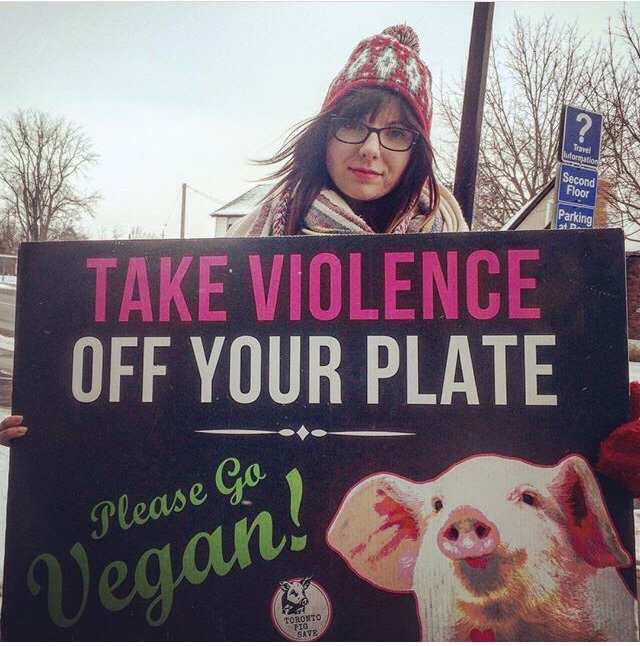April is Animal Cruelty Prevention Month
When I arrived, the KW Animal Save group was in the court room waiting for the proceedings to begin. I sat behind the activist group and introduced myself. They were all very friendly and welcoming. The press coverage for this hearing has been limited due to the defendant pleading guilty to some of the charges (meaning it didn’t go to trial), so I was the only person there from the local area. People came from up to 2 hours away to bear witness. This was heartwarming to discover. During the hearing we listened to detailed accounts of animal cruelty and neglect, more disgusting than I could have imagined (briefly described above). When I left I felt deeply sad for the animals, but also fulfilled from doing what I can to give a voice to the voiceless. I felt like I had discovered a part of who I am, that I was too scared to discover before because I was shy and anxious about exploring this on my own. I did it, and it was life changing. If you have thought about joining a movement I highly recommend it!
“Stein pleaded guilty to allowing animals in his care to live in distress, failure to provide sanitary conditions for animals in his care, failure to provide adequate ventilation, and failure to provide basic veterinary care.
The Crown withdrew charges of causing an animal to be in distress, failure to provide adequate food, failure to provide adequate and appropriate resting and sleeping quarters, and failure to provide adequate protection from the elements.”, Monte Sonnenberg, Simcoe Reformer.
What is Animal Cruelty?
“Animal cruelty generally falls into two categories: neglect, or intentional cruelty. Neglect is the failure to provide adequate water, food, shelter, or necessary care. Examples of neglect include: starvation; dehydration; inadequate shelter; parasite infestations; failure to seek veterinary care when an animal is in need of medical attention; allowing a collar to grow into an animal’s skin; confinement without adequate light, ventilation, space or in unsanitary conditions; and failure to trim hoofs or nails resulting in excessive growth (e.g. hoofs curling upwards).”… “Equally disturbing as neglect is the brutality of intentional cruelty, involving deliberate physical harm or injury inflicted on an animal. Regretfully, cases of animals being beaten, burned, poisoned or stabbed to death are not uncommon.
In some cases neglect or cruelty is the result of people using animals as tools for commercial profit, such as in the cases of puppy mills, dog fighting, cock fighting and illegal slaughterhouses.”, Ontario SPCA.
Sources
http://ontariospca.ca/what-we-do/investigations/what-is-animal-cruelty.html
https://definitions.uslegal.com/a/animal-cruelty/
https://www.pressreader.com/canada/simcoe-reformer/20180419/281479277010076
http://www.simcoereformer.ca/2018/01/18/farmer-pleads-guilty-to-animal-cruelty

